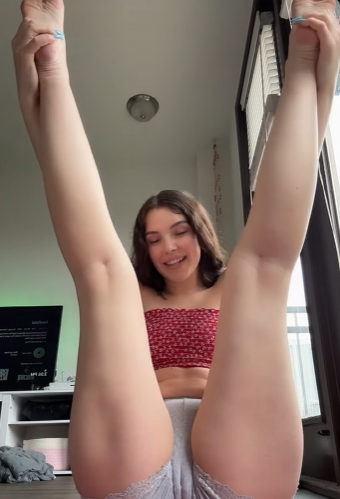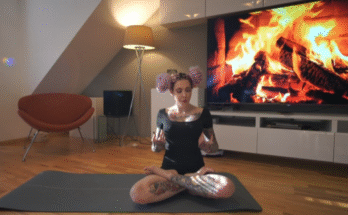
Early morning stretching is a gentle, intentional ritual that signals the transition from rest to purposeful action. Before coffee, notifications, or tasks rush in, dedicating 10–20 quiet minutes to elongate, mobilize, breathe, and awaken your body can elevate circulation, stabilize posture, and anchor a positive mindset. Think of it as calibrating your musculoskeletal system and nervous system so they cooperate smoothly for the rest of the day.
Why Stretch in the Morning?
- Rehydrates tissues: Overnight, fascia and intervertebral discs absorb fluid while you’re horizontal. Slow stretching redistributes fluid, reducing stiffness.
- Neuromuscular activation: Light dynamic movements wake dormant motor units, sharpening coordination and balance.
- Circulatory boost: Rhythmic contractions in large muscle groups pump blood and lymph, supporting nutrient delivery and metabolic waste clearance.
- Postural reset: Modern life hunches shoulders and shortens hip flexors. Morning opening counters cumulative tension before it compounds.
- Stress modulation: Conscious breathing with stretching engages the parasympathetic response, smoothing cortisol’s early surge.
- Habit stacking: Starting the day with success compounds motivation for healthier choices (hydration, nutrition, focus).

Principles for an Effective Routine
- Warm Start: Begin with very gentle joint circles to produce synovial fluid before deeper lengthening.
- Progressive Depth: Move from mobility (active range) to stability (light isometric holds) to length (gradual static stretches).
- Breath-Led Tempo: Inhale to prepare or extend the spine; exhale to sink or soften into the stretch. Breath is your pacing metronome.
- Balanced Planes: Include flexion, extension, lateral flexion, rotation, plus hip opening and posterior chain lengthening.
- Time & Consistency: 10 minutes daily beats 30 minutes sporadically. Consistency trains tissues to adapt.
- No Pain Rule: Distinguish mild stretching discomfort (a broad dull tension) from sharp, pinching, or nerve-like sensations—back off if those arise.
15-Minute Sample Morning Stretch Sequence
You can do this beside the bed with a mat. Approximate times are suggestions; adjust to your schedule.
1. Centering Breath & Scan (1 minute)
Sit cross‑legged or kneel. Place one hand on belly, one on chest. Take 5 slow diaphragmatic breaths. Mentally scan from crown to toes noting areas of residual sleep stiffness. Intentional awareness primes mind–muscle connection.
2. Neck & Upper Spine Mobilizers (1 minute)
Seated tall: perform gentle half circles (ear toward chest, roll to other ear) avoiding dropping head backward. Then do 5–8 controlled cervical rotations, slow scapular rolls backward and forward. Finish with thoracic extension: interlace fingers behind head, inhale lift sternum, exhale gently close elbows.
3. Cat–Cow + Thread the Needle (2 minutes)
On all fours, wrists under shoulders, knees under hips. Inhale arch (cow) drawing chest through arms; exhale round (cat) lifting between shoulder blades—8 cycles. Then thread right arm under left for a mild thoracic rotation, hold 3 breaths; switch sides. Emphasize smooth spinal segmentation.
4. Dynamic Hip Flexor & Hamstring Flow (2 minutes)
From all fours step right foot forward into a low lunge. Inhale lengthen spine; exhale press hips forward (avoid collapsing lumbar). Then gently shift hips back, straightening right leg for a half hamstring stretch, flexing toes toward you. Flow between lunge and hamstring 5 times with breath. Switch legs.
5. World’s Greatest Lunge Variation (1 minute)
From plank, step right foot outside right hand. Inhale open right arm to ceiling (thoracic rotation), exhale bring elbow toward instep. Two rotations, then shift hips back for a brief hamstring glide. Switch sides. This integrates ankles, hips, T‑spine.

6. Glute & Piriformis Opener (1 minute)
Lie on back. Cross right ankle over left thigh (figure‑four). Thread hands behind left thigh, flex both feet, gently draw in for 4–5 breaths. Keep sacrum grounded. Switch. This reduces posterior hip tightness that can influence lumbar mechanics.
7. Supine Core Activation (1 minute)
Maintain figure‑four position released. Perform 6–8 dead bug reps: arms over shoulders, hips and knees at 90°. Exhale extend opposite arm and leg, keeping lumbar spine neutral; inhale return. Core activation stabilizes new range.
8. Prone Spinal Extension & Scapular Setting (1 minute)
Roll prone. Forearms on floor (sphinx). Inhale lengthen crown forward, exhale gently draw chest through without crunching lower back. Optional: Lift and set shoulder blades down/back maintaining long neck. 5–6 breaths.
9. Standing Posterior Chain Sweep (1 minute)
Stand, feet hip‑width. Inhale sweep arms wide overhead, slight thoracic extension; exhale hinge from hips (micro‑bend knees) sweeping arms down and back. Perform 8 fluid reps to coordinate breath, hip hinge mechanics, and shoulder mobility
10. Lateral Line Stretch (1 minute)
Stand tall, clasp left wrist overhead, inhale reach upward, exhale side bend right keeping pelvis level. Two slow breaths; switch sides. Opens lats, obliques, intercostals for freer rib expansion.
11. Calf & Ankle Mobilization (1 minute)
Face wall. Step one foot back, press heel toward floor (gastrocnemius). Hold 2 breaths; bend back knee slightly (soleus). Then perform 8 ankle rocks. Switch. Responsive ankles aid gait efficiency.
12. Finishing Forward Fold to Mountain (1 minute)
Inhale arms up; exhale fold, letting head and arms dangle (ragdoll). Gentle knee bends alternate to mobilize posterior chain. Slowly roll up stacking vertebrae, finishing by drawing shoulders back and down. Take one expansive concluding breath.

Optional Add‑Ons (If You Have 5 More Minutes)
- Foam rolling quads and thoracic spine.
- Balance drill: Single‑leg stand eyes closed 20 seconds each.
- Mini band lateral walks for hip stabilizers.
Safety & Adaptations
- If you have hypertension, rise from floor positions slowly to avoid head rush.
- For lumbar disc issues, keep spinal flexion (forward folds) shallow and prioritize neutral core activation.
- For knee sensitivity, pad under kneeling leg or perform hip flexor stretches standing.
- Pregnant practitioners (second/third trimester) should avoid prolonged prone and deep end‑range supine core work; emphasize side‑lying and elevated positions.
Habit Anchors & Motivation
Link the routine to a fixed cue: alarm off → hydrate → stretch session → breakfast. Track sessions on a calendar; visual streaks reinforce commitment. Treat mornings you “don’t feel like it” as opportunities: perform just the first three steps—momentum often carries you onward. Notice and jot subtle gains (easier squat depth, fewer afternoon neck aches); tangible evidence fuels adherence.
Closing Thought
Early morning stretching is not about chasing extreme flexibility; it is a daily negotiation of ease, alignment, and presence. Invest a handful of minutes at dawn and reclaim compound dividends in posture, energy, and resilience the rest of the day. Roll out your mat tomorrow—future you is already grateful.



